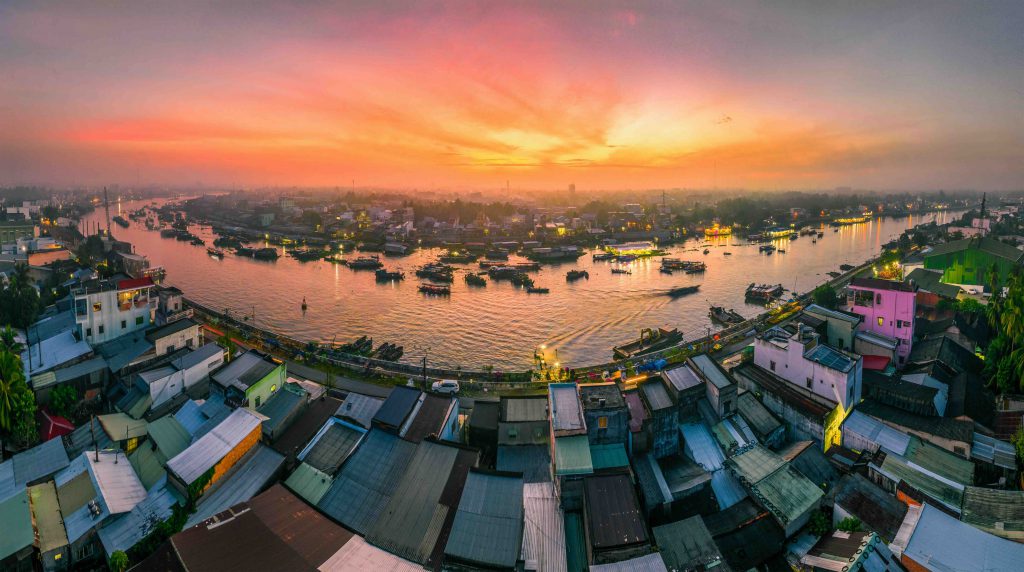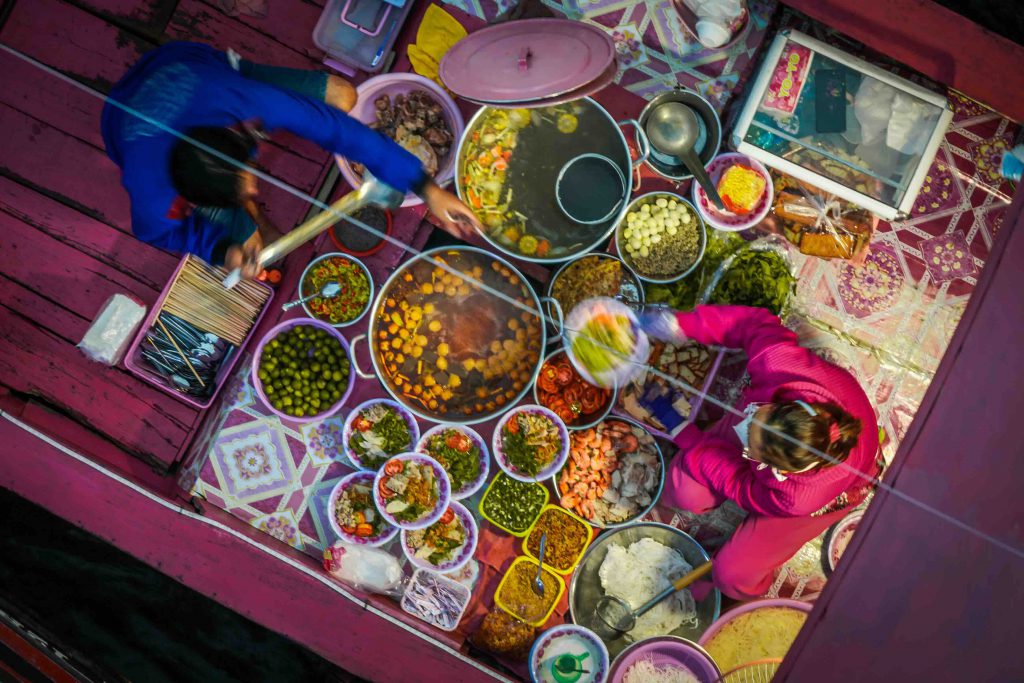Long Ho
Can Tho – white rice, clear waters,
Those who arrive do not wish to leave.
Dawn has barely broken, but the Cai Rang Floating Market is already buzzing with activity. Located on a tributary of the Hau River in Can Tho, this market has been a bustling trading hub for over a century. It’s become a vibrant symbol of the Mekong Delta’s riverine culture.

Recognized as a National Intangible Cultural Heritage in 2016, Cai Rang reminds us of the deep bonds between people and nature, as well as the long-held traditions of the region’s waterways.
Each morning, the river comes alive with the splash of oars and the chug of boat engines. As the sun rises, hundreds of boats of every size and color crowd the river, creating a festive atmosphere. The market is renowned for fresh fruit and farm produce brought straight from the delta’s orchards. Most sellers are middle traders who buy from farmers and resell at the market, ensuring freshness and quality. Others are farmers, offering their own harvests.
River traders – thuong ho, as locals call them – live and work entirely on their boats. Their clever invention is the cay beo: a bamboo pole fixed upright at the bow, with samples of goods hung high so buyers can see them from a distance, eliminating the need for shouts or loudspeakers. Watching life unfold on these boats adds to the market’s atmosphere: along with cargo decks, there are makeshift kitchens, chickens or dogs, even a clothesline – the belongings of families who call the river home.
Large boats from distant provinces anchor until their produce sells out. Smaller boats treat the market not just as a place of trade, but as a floating village full of families. Material life may be modest, but affection and solidarity flow deep, like the evening tide. All the rhythms of a village – trading, living, and culture – converge on this stretch of river.

No trip to Can Tho is complete without breakfast at Cai Rang. Among the highlights is the “pink boat,” run by a husband-and-wife team, where visitors can enjoy a steaming bowl of hu tieu brimming with fresh shrimp, minced pork, and herbs, or fragrant bun rieu cua crab noodle soup washed down with a glass of iced milk coffee. Many tourists also savor fresh pineapples – known locally as khom – peeled and served right on the spot. Fruit boats are not only floating grocery stores but also cozy places for travelers to chat with vendors, learn the art of choosing fruit, and hear stories of life on the river.
As Tet approaches, the market bursts into its most dazzling colors. Boats laden with flowers, ripe fruit, sticky rice cakes, and watermelons crowd the river. The most striking are the flower boats, laden with golden apricot blossoms, chrysanthemums, round marigolds, fiery red chilies, and citrus trees heavy with fruit – all painting a picture of abundance and prosperity. The cacophony of boat engines, laughter, and calls to trade forms a seasonal melody, the sellers eager to finish early and return home to decorate, while the buyers hurry to stock goods for distant village markets.

Yet this unique cultural treasure – the very spirit of the Mekong’s waterborne life – is in decline, as urbanization and expanding road transport draw many traders ashore. In 2016, Can Tho authorities launched the “Preserve and Develop Cai Rang Floating Market” project, upgrading docking areas and offering financial incentives for traders to maintain their cay beo. Cultural activities such as weekend don ca tai tu concerts, annual festivals, experiential tours, and smart tourism models promoted through social media are helping the floating market remain an attractive destination, preserving its timeless soul amid modern change.
Come to Cai Rang on a misty morning, drift along the river, and feel the heartbeat of the Mekong Delta.










